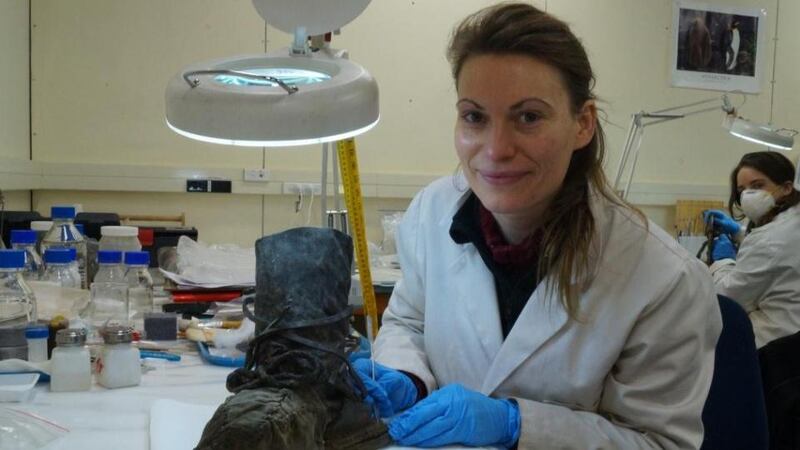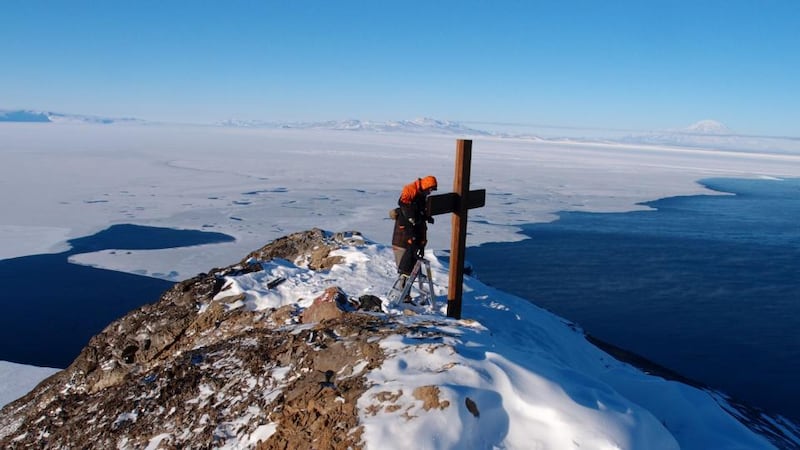When Stefanie White returned to her home in Ballyshannon, Co Donegal, from Antarctica last autumn she did so as a new member of an exclusive group that includes the renowned Irish explorers Tom Crean and Ernest Shackleton. She is one of the few people from Ireland to have lived in Antarctica in winter, the most savagely cold time of year in the coldest place on Earth.
This week White returned to Antarctica, for the start of a second southern-hemisphere winter at Scott Base, the spaceship-like facility where she works as a conservator for the New Zealand-based Antarctic Heritage Trust.
“If you don’t have your gloves on outdoors it’s a matter of life or death, as frostbite can be an immediate threat,” she says of the Antarctic winter, from March 21st to September 21st, when the skies are sunless and wind chill brings temperatures to between minus 60 and minus 100 degrees. Scientists who go to Antarctica to study usually go in the summer, she says in Letterkenny, before her return to Antarctica.


The crew relies on advanced technologies for heating, electricity, water and refrigeration, and members live on constant alert for any sign of a system failure or fire that could jeopardise the base. “We’re not even allowed to be barefoot except during the three-minute showers we take,” says White, whose daily attire consists of layer upon layer of standard-issue thermalwear. “This is so we would be able to run outside in case of an emergency.”
White has been working in Antarctica as part of the Ross Sea Heritage Restoration Project, which the trust is running at five early Antarctic expedition bases, including Shackleton’s hut at Cape Royds.
Launched in 2002 “to conserve the physical legacy of the huts and to inspire people with the values of adventure, discovery and endurance”, the project includes providing virtual access to the huts through a partnership with Google Earth’s World Wonders Project.
Highlights include the recent announcement that a packet of photographic negatives in one of the huts, named Scott’s Hut after the English explorer Capt Robert Falcon Scott, had been conserved, and revealed images from Shackleton’s 1914-17 Ross Sea Party expedition that had never been seen before.
White’s work this winter will consist of conserving objects from Discovery Hut, another Scott structure. The conditions that cost Scott and four members of his team their lives as they made the 1,381km trek back from the South Pole have had the effect of preserving the huts, which remain much as the early explorers left them, a century ago. Without the intervention of professional conservators such as White, however, the huts and their contents would stand no chance of surviving indefinitely.
“Everything you can imagine remains in Scott’s Hut: food, equipment, skis, clothes and scientific equipment,” says White. More than 10,500 items have been identified in the 15m-by-8m prefabricated wooden hut and adjoining stable. During Scott’s South Pole expedition the hut accommodated 20 men, including Crean, who came from Co Kerry.
The painstaking work of conserving the wide range of objects from Scott’s Hut included using stabilising techniques on the labels and tins of hundreds of cans of turtle soup that explorers left there. “Everything is conserved to some degree,” White says.
“There are so many items, though, that we take a systematic approach to ensure that prioritised items, like articles of explorers’ clothing, are given a bit more time and attention.”
A stiff, cream-coloured clump of fabric that White was working on turned out to be long johns marked with the initials “CG”. They had belonged to Apsley Cherry-Garrard, a member of Scott’s team. “To keep the long johns within context I had to leave some of the dirt on them, such as soot from the seal blubber that was burned for warmth inside the hut.”
The rewards of Antarctic life have included witnessing the glorious multicoloured aurora australis – “like a moving fabric in the sky” – and crystal-clear constellations on display in winter. Seeing the sun return in September after six months of only a huge orange moon was one of the most uplifting experiences White has had.
“It’s very strange to be without the sun that long . . . Everyone reacts differently to it,” she says. “By the end of the winter I was suffering from fatigue even after a night’s sleep and felt like I was pushing my legs in order to walk. It was one of the happiest days of my life when I could see the sun in the sky. I felt as if every tiny nerve in my body was absorbing all this energy from the sun.”
You can see the newly discovered photographs at nzaht.org/AHT/antarctic-photos and follow White’s conservation work at nzaht.org/AHT/blog










